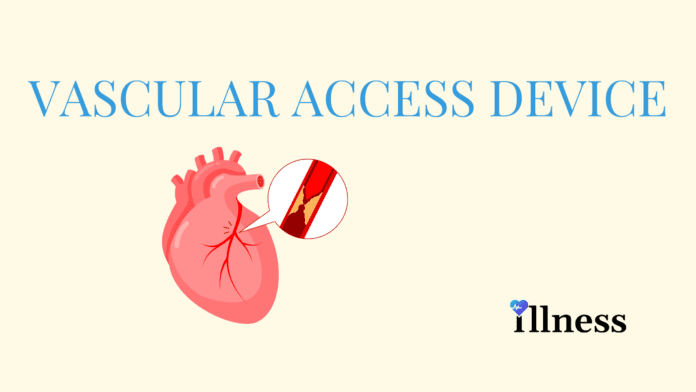Overview Of Vascular Access Device
A vascular access device is a tube that runs through a vein in your chest or right arm and ends at the right atrium (the right side of your chest). This helps with gaining access to the blood stream. A Central Venous Catheter is another name for this device.
The catheter can be attached to a port that is placed under the skin, if it is located on your chest. The port is also placed by a small surgery.
This device is helpful because it carries medicine and nutrients throughout the body, and having a port attached to the catheter limits wearing on your veins more than the catheter by itself.
Commonly Associated With
Port-a-Cath; InfusaPort; Central venous catheter – subcutaneous; Medi – port; Subclavian port; Central venous line – port
What Is The Purpose Of A Central Venous Catheter And Port?
A vascular access device and port treats for extended lengths of time.
For example, you may need:
- Medicines like antibiotics for months to weeks at a time.
- Additional nutrition to help irregular bowl movement.
Or you may be receiving:
- Kidney dialysis multiple times in a week, or if you are in Cancer treatment, as well
Your health care provider will talk with you about other methods for receiving medicine and fluids into a vein and will help you decide which one is best for you.
Placing The Vascular Access Device
Most ports are placed in the chest through surgery. But a port can also be set in your arm. Surgery could involve:
Administer anesthesia that puts you to sleep, so you feel no pain.
Or instead you are given medicine that makes you mub and relaxed to any feeling.
Afterwards, you may go home, if you are cleaned by the surgical team.
The port might be visible as a quarter-sized lump beneath the skin.
Expect soreness for days after the surgery. However, after it is fully healed, your port should not hurt.
Taking Care Of And Using Your Port
The port should have 3 parts:
- Portal or reservoir. A pouch made of hard metal or plastic.
- Tube or catheter. This carries medicine or blood from the portal to a large vein and into the heart.
- Silicone top . Insert a needle into the portal here.
For nutrition or medicine to be sent in the port, a skilled provider will inject a needle through the skin, into the silicone top, and then into your port. Numbing cream can be added before the injection to limit needle pain.
A vascular access device can be used in a hospital, clinic, or even your home. To decrease infection, a disinfected bandage will be put surrounding the port. Nothing should stick out of the port.
You should have a port cleansed once a month, to fight against a clot. For this, a provider will use a unique solution to flush the port.
With provider permission, you can get your device wet from swimming or bathing, when it is not in use. However, an additional check in with a provider is needed before you do any heavy physical activity, like contact sports or weight lifting.
A port can be removed if it is no longer needed, but it can be used for a lasting period of time.
When To Call The Doctor
Tell your provider right away if you notice any signs of infection, such as:
- You have a fever over 100.5°F (38.0°C).
- The vascular access device site is swollen or warm.
- Your port location is red, or if red streaks are around the site.
- Green or yellow drainage is secreting from your port site.
- You have pain or discomfort at the site.
- Your port seems to have moved.



